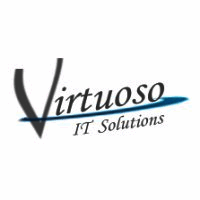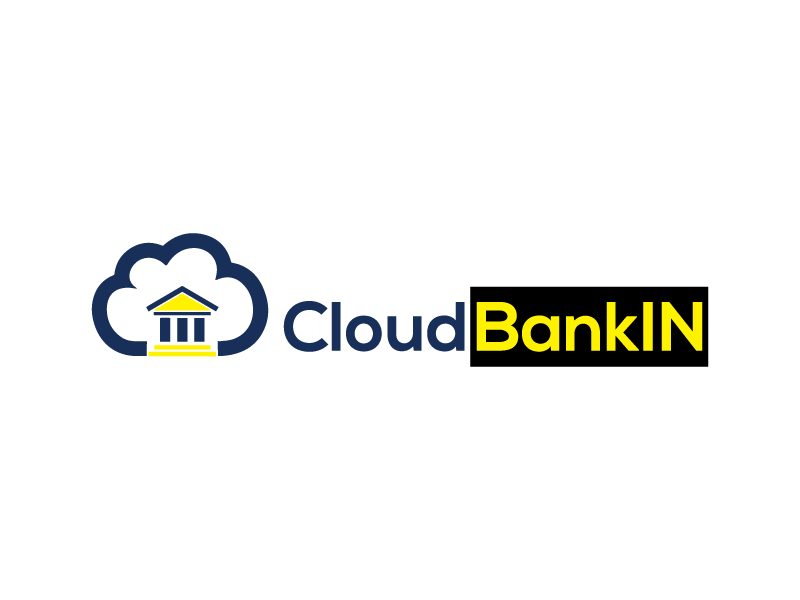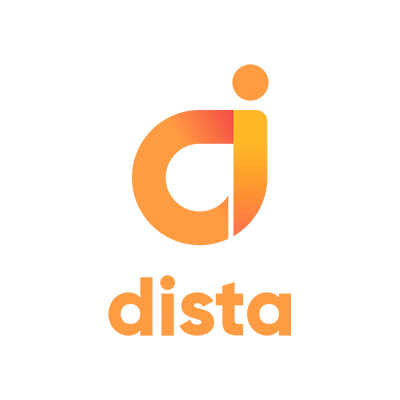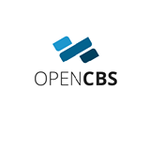What Is Microfinance Banking Software?
Microfinance banking software is a digital solution built expressly to help microfinance institutions (MFIs) handle their operations and financial transactions more efficiently. It blends cutting-edge technology with the unique requirements and laws of microfinance banking, making it an indispensable tool for any MFI trying to improve their services and streamline their processes.
At its heart, microfinance banking software serves as a centralized system for automating and digitizing conventional manual operations, leading in enhanced efficiency, accuracy, and cost savings for MFIs. It automates a variety of operations, including loan administration, savings and deposits, customer data management, and reporting. This automation saves time and labor while also reducing the possibility of human error.
One of the primary benefits of microfinance banking software is its capacity to improve data management and analytics. Digitizing consumer and financial data allows MFIs to acquire important insights into their operations and make educated decisions that fuel business success. This software also allows MFIs to track repayments, loan disbursements, and client data in real time, making it easier to detect problem areas and take corrective action promptly.
Furthermore, microfinance banking software has strong security features to ensure the safety and confidentiality of sensitive financial information. MFIs can ensure the security of their clients' information by implementing features like as user access controls, data encryption, and regular backups. Other important characteristics to look for in microfinance banking software are scalability, multi-currency capability, and compatibility with other financial systems.
These capabilities enable smooth integration with current infrastructure and adaptability to the MFI's changing demands. Investing in microfinance banking software can provide numerous benefits to an MFI, including increased efficiency, lower operational expenses, better client service, and higher revenue. With the growing global demand for microfinance services, having reliable and efficient software is critical to any MFI's success. MFIs can achieve long-term success by carefully examining the necessary features and functionalities while selecting microfinance banking software.
What Are The Recent Trends In Microfinance Banking Software?
Microfinance banking software has grown greatly in recent years to meet the changing needs and aspirations of the microfinance business. The rise of digitalization has resulted in a trend towards more efficient and user-friendly software solutions.
We will look at the most recent trends in microfinance banking software that purchasers should keep in mind when selecting the best solution for their company.
1. Cloud-Based Solutions: One of the most significant changes in microfinance banking software is the transition to cloud-based solutions. Microfinance institutions can use cloud-based software to access their data and operations from anywhere at any time, making it easier to serve consumers in remote locations. This trend improves scalability and cost-effectiveness by eliminating the need for institutions to invest in costly on-premise infrastructure.
2. Mobile Applications: The rise of mobile technology has had an impact on the microfinance business, with more consumers expecting convenient and easy ways to manage their account. As a result, several microfinance banking software providers now provide mobile applications that allow customers to make loan payments, view account information, and apply for loans using their cellphones. This trend has significantly enhanced customer experience and efficiency for microfinance firms.
3. Data Analytics: With the growing volume of data created in microfinance operations, data analytics has become a vital component of banking software. Advanced data analytics solutions can help organizations get important insights into their clients' behavior, identify dangers, and make data-driven decisions. This trend not only enhances decision-making, but also allows institutions to create better loan products that are suited to the demands of their customers.
4. Integration With Digital Payment Systems: Another growing trend in microfinance banking software is the incorporation of digital payment methods. With the rise of fintech, many clients have become accustomed to digital payments, and microfinance institutions must stay up with this trend. Software solutions that seamlessly integrate with various digital payment platforms can significantly improve user experience and adoption rates.
5. Automation And AI: Automation and artificial intelligence (AI) are transforming the microfinance business, and software companies are increasingly incorporating these technologies into their solutions. From loan origination and underwriting to customer support, automation and AI may streamline processes, minimize human error, and improve efficiency and accuracy, making them an important trend to consider when selecting microfinance banking software.
Benefits Of Using Microfinance Banking Software
Microfinance banking software is a strong instrument that has the potential to transform the traditional banking system by offering individuals and small companies with efficient, affordable, and inclusive financial services. It provides numerous benefits to both financial institutions and their customers, making it an excellent investment for any organization seeking to extend its microfinance services.
1. Increased Efficiency And Productivity: One of the primary advantages of adopting microfinance banking software is its capacity to automate and streamline processes. This leads to increased efficiency and productivity for financial institutions by eliminating the need for human documentation and lowering the time and effort necessary for processes like loan processing and account administration. This increased efficiency enables microfinance institutions to serve a larger number of clients while maintaining high service quality.
2. Customized Loan Management: Microfinance banking software has a complete loan management system that enables institutions to tailor loan packages to their clients' needs and requirements. This feature enables microfinance institutions to meet the different financial demands of low-income individuals and small companies, hence increasing financial inclusion and economic growth.
3. Real-Time Financial Reporting And Analytics: Microfinance banking software enables institutions to monitor and track their loan portfolio, client transactions, and overall financial performance. This information can assist institutions in making data-driven decisions, identifying potential dangers, and developing successful plans for long-term growth.
4. Improved Consumer Experience: Microfinance banking software assists financial institutions while also improving the consumer experience. With features like online account management, mobile banking, and automated loan application processes, the software makes banking more convenient and accessible to customers. Furthermore, the software's user-friendly interface and linguistic support make it easier for microfinance banks to serve a broad client base, resulting in higher customer satisfaction.
5. Risk Management: Managing risk is critical for any financial institution, particularly in the microfinance industry, where consumers may lack collateral or have a weak credit record. Microfinance banking software offers risk management tools such as credit scoring, loan collection tracking, and fraud detection, which assist institutions in mitigating risks and ensuring the long-term viability of their operations.
Important Factors To Consider While Purchasing Microfinance Banking Software?
When considering acquiring microfinance banking software, there are various variables to examine to ensure that you are making the best option for your firm.
This buyer's guide will detail the essential factors you should consider before making a purchase.
1. Functionality And Features: The first and most important aspect to evaluate is the functionality and features provided by the microfinance banking software. It should be capable of supporting your specific demands and activities, including loan administration, savings, deposits, and reporting. It should also include capabilities for customer management, loan origination, and automated workflows to help you streamline your procedures.
2. Scalability: As your business expands, so will your clientele and transaction volume. It is critical to select software that is scalable and can meet your future growth without restriction. This will spare you the difficulty and expense of moving to a new system in the future.
3. Customizability: Each microfinance institution has distinct requirements and workflows. As a result, it is critical to select software that can be adjusted to fit your individual requirements. This ensures that the software is compatible with your company procedures and helps you reach optimal productivity.
4. Integration Capabilities: Ensure that the microfinance banking software integrates effectively with your existing systems, such as accounting software or payment gateways. This will allow for smoother data transfer and fewer human data entering errors.
5. Security: Because the microfinance sector handles sensitive financial information, security should be the first consideration when picking software. Make sure the program includes strong security features like data encryption, access limits, and regular backups to protect your data from breaches or loss.
6. User-Friendly Interface: The software should have an intuitive and user-friendly interface to help your employees embrace it quickly and reduce training time. A complex and difficult-to-use technology can reduce production and add additional complexities.
7. Technical Support And Maintenance: When acquiring software, it is critical to examine the technical support and maintenance provided by the seller. Ensure that they give dependable and prompt assistance in the event of any problems or crises. In addition, make sure the software includes frequent upgrades and maintenance to keep it up to date.
8. Pricing: Finally, analyze the software's pricing. Keep in mind that this is a long-term investment, so look beyond the initial expense. Consider the return on investment, the cost of upkeep, and any additional features that may be included with higher-priced models.
What Are The Key Features To Look For In Microfinance Banking Software?
When looking for Microfinance Banking Software solutions, a few critical aspects should be at the top of your priority list. These features can increase your microfinance institution's efficiency, accuracy, and customer experience.
Let us take a closer look at things to look for when evaluating Microfinance Banking Software.
1. Loan Management: One of the key functions of microfinance institutions is to make loans to individuals and small companies. As a result, it is critical to choose software that has extensive debt management features. Consider features such as loan application processing, approval workflows, disbursement tracking, and repayment management.
2. Client Management: Another critical factor to evaluate is how the software manages client data. It should be able to save and retrieve client data, monitor client interactions, and provide reports. This enables improved communication and specialized services for clients.
3. Accounting And Financial Management: Because microfinance institutions manage a huge volume of financial transactions, it is critical to select software that can accurately handle complex financial computations. Look for automated accounting, budgeting, and financial reporting options to help you streamline your financial management procedures.
4. Mobile Capabilities: With the rise of mobile technologies, it is critical to have software that is accessible and usable on mobile devices. This enables loan officers to operate on the go and gives consumers easy access to their accounts.
5. Security: When working with financial data, security is a primary consideration. Look for software that has encryption, data backup, and other security features to safeguard critical information.
6. Integration: It is critical to select software that can work with your current systems, such as accounting or CRM software. This can save time and effort because it eliminates the need for human data entry.
7. Customization: Because no two microfinance institutions are alike, it's critical to select software that can be tailored to your unique requirements. Look for ways to personalize workflows, reporting, and interfaces.
Why Do Businesses Need Microfinance Banking Software?
In today's fast-paced and competitive business world, having access to dependable financial services is critical to the success of any firm. Traditional banking systems may not always suit the unique demands of enterprises in developing or low-income communities. This is where the microfinance banking software comes in. Microfinance banking software is a specialist solution built to meet the specific needs of microfinance institutions (MFIs). It enables these institutions to efficiently manage activities such as loan issuance, payback tracking, and client administration.
Here are some reasons why businesses, particularly those focusing on microfinance, require microfinance banking software:
1. Streamlined Operations: One of the key reasons firms require microfinance banking software is to streamline their processes. Manual methods in microfinance can be time intensive and error-prone. Microfinance banking software allows firms to automate a variety of operations, leading in enhanced productivity, lower operational costs, and more accuracy.
2. Improved Customer Experience: Microfinance banking software includes functions such as client administration, loan tracking, and automated communication, which can significantly enhance the customer experience. It enables organizations to create a more seamless and convenient experience for customers, resulting in improved satisfaction rates and customer retention.
3. Accurate Data Management: Microfinance banking software has strong data management features, allowing firms to store and analyze consumer information. This information may be used to make informed and strategic decisions, which will lead to corporate growth and expansion.
4. Support For Remote Operations: As remote work becomes more popular, businesses require software solutions that can accommodate this trend. Microfinance banking software includes cloud-based storage, online loan applications, and mobile accessibility, making it easier for businesses to transition to remote operations.
5. Regulatory Compliance: MFIs are subject to a variety of rules and compliance standards, and failure to comply can result in fines or even legal action. Microfinance banking software is intended to follow these standards, ensuring that firms remain compliant and avoid potential legal complications.
How Much Time Is Required To Implement Microfinance Banking Software?
The time required to implement microfinance banking software varies based on a number of factors. On average, the implementation process can take between 6 and 12 months. However, this timetable may be modified by your organization's size and complexity, resource availability, and team readiness to transition to a new system. The first step in installing microfinance banking software is to undertake a comprehensive review of your organization's needs and processes.
This can take anywhere from two to four weeks, depending on how quickly your team can collect and evaluate data. Once the assessment is completed, the deployment procedure can begin. This often includes customizing and configuring the software to match your individual requirements, as well as integrating it with your existing systems. Depending on the intricacy of your requirements, this phase can last anywhere from 3 to 6 months.
After the software has been completely configured, the testing process begins. This is critical to ensuring that the software functions properly and satisfies your organization's requirements. This phase can last between 1 and 2 months, depending on the amount of test cases and the level of testing. The final step in implementation is training.
This includes educating your team on how to utilize the new software and migrating them away from the old systems. The duration of this phase varies depending on the size and readiness of your team. It is important to note that the implementation process does not finish once the software is delivered. Ongoing support and maintenance are required to guarantee the system runs smoothly. This may necessitate a small team devoted to managing the product for several months after launch.
What Is The Level Of Customization Available In Microfinance Banking Software?
The level of flexibility accessible with microfinance banking software varies by software provider. However, as a customer, you should understand the customisation options and how they might benefit your organization. In general, microfinance banking software is highly customizable to fit the specific demands of microfinance institutions (MFIs). This may include modifying user interfaces, data fields, workflows, and reports.
This level of customisation ensures that the software is tailored to your institution's processes rather than the other way around. Furthermore, some software vendors give a variety of modules and capabilities that can be chosen and adjusted based on your institution's specific needs. This enables a more personalized and efficient solution that is compatible with your MFI's specific activities. The software's scalability is an important factor to consider while evaluating customization choices.
As your institution grows, you may need to introduce new features or make software updates. As a result, it is critical to select a provider who offers continuing customization and assistance to fit your changing requirements. Another thing to keep in mind is the simplicity of modification. Look for software with an easy-to-use interface and straightforward modification features, allowing changes to be performed without requiring substantial technical knowledge.
Finally, the level of customisation available in microfinance banking software allows MFIs to have a tailored, efficient, and scalable system that matches their specific needs. As a buyer, you should carefully consider the customization choices and select a software vendor who can give the level of modification required for your institution's success.
Which Industries Can Benefit The Most From Microfinance Banking Software?
Microfinance banking software is an important tool for financial institutions, particularly those in poor nations, because it allows them to efficiently manage their microfinance operations. However, the benefits of this program extend beyond the finance business. In fact, several companies would profit substantially from deploying microfinance banking software.
Let's look at the top industries that will profit the most from this technology.
1. Banking And Financial Services Industry: It goes without saying that microfinance banking software benefits the banking and financial services business significantly. This software streamlines several procedures, including loan origination, disbursement, and repayment, making it easier for banks and microfinance organizations to run their operations. It also offers real-time data and analytics, enabling these organizations to make informed decisions and identify potential dangers.
2. Microfinance Institutions: Microfinance institutions, or MFIs, are organizations that offer small loans and financial services to low-income individuals and enterprises. These institutions serve a large number of underprivileged areas and are critical for increasing financial inclusion. MFIs can use microfinance banking software to digitally manage their loan portfolios, track repayment schedules, and analyze their clients' creditworthiness, thereby increasing the efficiency and effectiveness of their operations.
3. Nonprofit Organizations: Non-profit organizations (NGOs) and charities play an important role in supporting microfinance services. They fund and support microfinance institutions and underserved populations. These organizations can use microfinance banking software to better track their investments, evaluate the success of the communities they help, and guarantee that their funds are spent in the most effective way.
4. Agriculture And Rural Development Industry: Microfinance banking software can considerably aid the agriculture and rural development industries, especially in underdeveloped nations where agriculture provides the majority of the population's income. This program can be used to give financial services to small-scale farmers, enabling them to obtain finance and improve their farming practices. It also allows financial institutions to assess the risks of financing to this sector, which improves rural people' access to finance.
5. Mobile Money Services: With the proliferation of mobile money services in many developing countries, microfinance banking software can integrate with these platforms to provide a seamless and efficient method of transferring and managing microloans. This can be extremely beneficial for people who do not have access to regular banking services and instead rely on mobile money for financial transactions.
Conclusion
To summarize, selecting the correct microfinance banking software is critical for the success of any microfinance institution. It is critical to thoroughly assess and compare various solutions depending on your unique demands and objectives. Before making a decision, take into account scalability, adaptability, security, and usability.
Furthermore, research reviews and get recommendations from other microfinance institutions to verify you're investing in dependable and effective software. With the appropriate microfinance banking software, you can streamline your operations, improve financial management, and ultimately empower your organization to make a positive difference in the lives of individuals and communities.




-logo.jpg)














